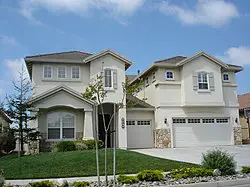Over the past decade, the affordability of housing has become a growing concern for the middle class in the United States. Rising housing costs, outpacing average incomes, have posed significant challenges for middle-income families, particularly in urban areas with robust job markets. However, amidst this trend, there are still a few cities where middle-class families can find affordable homes and potentially build wealth. In this blog post, we will explore the concept of the middle class, examine the factors influencing middle class houses choices, and highlight five affordable U.S. cities where a middle class House can buy by middle class families.
Table of Contents
Defining the Middle Class
The definition of the middle class can vary, but it generally refers to individuals or families who fall within a certain income range, have achieved a certain level of financial stability, and enjoy a comfortable standard of living. However, the specific income threshold that defines the middle class can vary depending on factors such as location and household size.
Middle Class House Challenges
The rising cost of housing in the U.S. has put a strain on middle-class families. Many find themselves facing affordability challenges, particularly in urban areas with strong job markets. Limited housing supply and high demand contribute to escalating prices, making it difficult for the middle class to find suitable Middle Class home within their budgets. As a result, many are forced to make trade-offs, such as living in areas with longer commutes or sacrificing other aspects of their lifestyle to afford housing.
The Middle Class and Metro Areas
The middle class in the United States is predominantly found in small to mid-sized metro areas. These areas have experienced significant changes in the size of their middle classes over time, often influenced by demographic and industrial patterns. Expanding high-income populations in these areas have often led to changes in the overall size of the middle class. It’s important to note that measuring the metro middle class provides valuable insights but may not capture the full complexity of the middle-class experience.
See Also – Top 15 Tips How To Buy A Home In The Bay Area – First Time Buyer- Updated 2023
Common Features of Middle Class Homes
Middle class house in the United States often have several common features that reflect the preferences and needs of middle-class families. These features include:
Homeownership
Middle-class families tend to own their own homes, although they may have a mortgage. Homeownership is considered a cornerstone of the American Dream and a symbol of middle-class life.
Reasonable Affordability
Middle-class neighborhoods often feature an attractive housing stock that is reasonably affordable to middle- and modest-income families. This affordability allows middle-class families to purchase homes that suit their needs and budget.
Varied Housing Types
The housing market for middle-class homes offers a range of options, from contemporary to craftsman-style homes and gated communities. Middle-class families have choices when it comes to selecting a home that aligns with their preferences and lifestyle.
Functional Layout
Middle-class homes typically have functional layouts with features like dining rooms, entrance halls, studies, and two or more bedrooms. These homes are designed to accommodate the needs of families and provide spaces for different activities.
Differences between Middle-Class Homes in Urban Areas and Suburban Areas
The American Dream often includes homeownership, but the ideal home can vary greatly depending on lifestyle preferences. For the middle class, the choice between a city abode and a suburban haven can be a significant one. Let’s delve into the key differences between middle-class homes in urban and suburban areas.
Living Space and Design:
- Urban: Square footage tends to be smaller in urban areas. Apartments or condos are common, offering efficient layouts and shared amenities like gyms or courtyards. Single-family homes exist, but they’re often historic townhouses or smaller, more modern dwellings.
- Suburban: Suburban homes typically offer more square footage for the price. Single-family homes with dedicated yards and garages are the norm. Floor plans often prioritize open-concept living spaces and multiple bedrooms for growing families.
Cost and Value:
- Urban: The overall cost of living, including housing, can be higher in urban areas. However, property values often appreciate steadily due to limited space and high demand.
- Suburban: Housing costs might be lower in suburbs, but factor in transportation expenses, as car ownership is practically a necessity. Property values can appreciate, but may not rise as quickly as in urban areas.
Lifestyle and Amenities:
- Urban: Urban living offers a vibrant atmosphere with easy access to restaurants, shops, cultural attractions, and entertainment venues. Walkability and public transportation are often excellent, reducing reliance on cars.
- Suburban: Suburbs offer a quieter, slower pace of life. Amenities like parks, schools, and shopping centers are often clustered but require driving for access. A strong sense of community can be found in many suburban neighborhoods.
Family Considerations:
- Urban: Urban life can be ideal for young couples or families seeking diverse experiences and educational opportunities. However, smaller living spaces and safety concerns might be considerations.
- Suburban: Suburbs are often seen as ideal for raising children. Safe neighborhoods with good schools, ample green space for play, and a family-oriented atmosphere are attractive draws.
Conclusion
While the affordability of housing for the middle class in the United States has become a pressing issue, there are still cities where middle-class families can find homes within their budgets. Pittsburgh, Indianapolis, Kansas City, Columbus, and San Antonio are examples of cities where the middle class can buy homes at a median price of $166,500. These cities offer a combination of affordable housing, strong job markets, and a good quality of life. Middle-class homes in the United States often reflect the preferences and needs of middle-class families, with features such as homeownership, reasonable affordability, and functional layouts. By highlighting these cities and understanding the challenges faced by the middle class, we can work towards creating policies and initiatives that promote affordable housing and support the growth of the middle class.
FAQs
The median sales price for a middle-class home in the US varies greatly, but as of 2024, it sits around $420,800. However, this can differ significantly depending on location and housing market trends.

